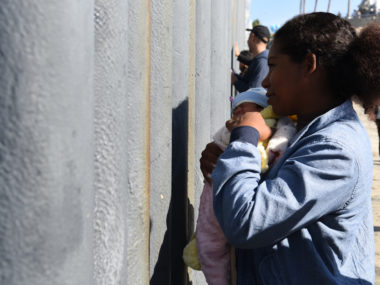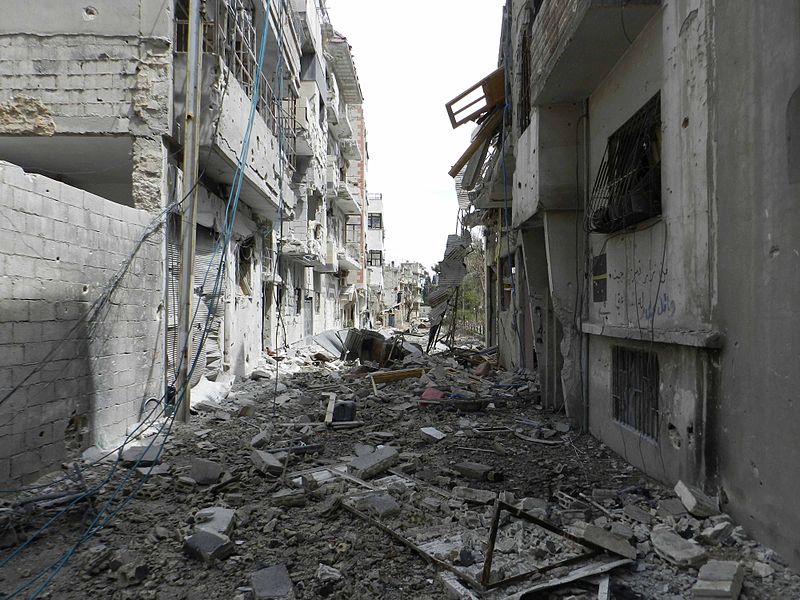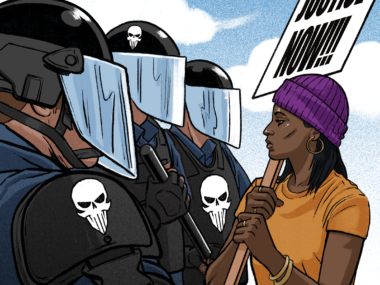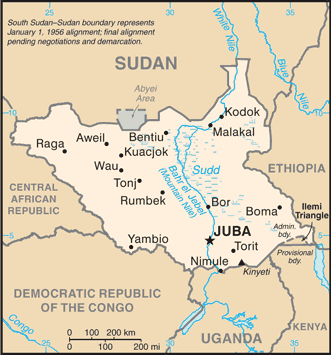
On February 18th, the Obama administration will hold a Summit on Countering Violent Extremism. The summit is designed to address the growing problem of religious extremism, especially in the Middle East. Since 2011, radical Islamist groups have flourished in the civil wars in Syria, Iraq, Afghanistan and Libya. The al Nusra Front had no real presence in Syria until civil war broke out in 2011. The same is true of ISIS. In fact, since 2007, the number of violent Islamist groups in the Middle East and Africa has significantly increased and has spread to include most of North Africa, the DRC, Tanzania, Kenya and South Sudan.
Currently, the administration has no clear strategy for dealing with this problem. Experts in the Pentagon, State Department and intelligence agencies have admitted that they do not understand why these extremist groups have emerged at this time or why they have flourished. According to Major General Michael Nagata, commander of American Special Operations forces in the Middle East, “We do not understand the movement [ISIS], and until we do, we are not going to defeat it.”
Key to an effective counter-strategy is the ability to identify when, where and how extremism helps groups mobilize local support and gain external financing. To do this one must first identify the three strategic incentives rebel groups face to adopt an extreme ideology.
- First, adopting an extremist ideology can give rebel organizations a recruiting advantage. The ideological extreme is where individuals are more likely to be willing to fight and die for a cause making them easier to recruit as soldiers.
- Second, adopting an extremist ideology can serve as a credible commitment to a set of principles that make the group appear more trustworthy than the competition. Fundamentalist Islam is a way for rebel organizations to credibly promise to remain true to their ideals and not “sell out” once in power. Even moderate citizens might be willing to support Islamists if they believe they will be less corrupt once in office.
- Third, adopting an extremist ideology helps rebel organizations positively differentiate themselves from competing rebel groups. Extreme ideology creates what could be considered a “market niche” for a rebel group, causing a particular population to remain loyal regardless of what other groups do. Few potential recruits motivated by a desire to protect Islam will be excited about joining the second most Islamic group, just like few ethnic nationalists will eagerly sign up for the third most patriotic organization.
Not all civil wars, however, are likely to create equally hospitable conditions for the success of extremist groups. This is why radical Islam thrives in some contexts but not others. Extremist groups are more likely to form and prosper in three types of conflict environments: (1) countries with ethnically or religiously polarized societies, (2) countries with a history of bad governance and corruption, and (3) countries with civil wars with multiple competing rebel groups. These countries are already divided along ethnic or sectarian lines and their citizens are keen for credible commitments to better behavior after years of bad government. It’s also where rebel groups have incentives to differentiate themselves from similar looking factions. All of these conditions currently exist in the Middle East.
So what should the U.S. do to counter extremism? First and foremost , eliminate the underlying conditions that favor its success. Challenging the values of an extremist group head on is likely to be counterproductive. A “war on ISIS” will have no more success than our “war on al-Qaida” has had. A better strategy is to provide hard evidence to local populations that the radical groups that hope to represent them are not as honorable as they try to appear: they will not rule as fairly and benevolently as they claim. Outsiders can also help moderate groups devise their own costly signals that they are trustworthy and have an attractive and credible product that they will deliver should they come to power. Enhancing the credibility of these moderate groups should help recruit the support of those citizens whose beliefs are more aligned with them and undercut the support of extremists. Moderate groups will also require more practical, material assistance to compete effectively with extremist groups that draw funding from wealthy like-minded donors from abroad.
General Nagata was right that we will not be able to stop ISIS or any of the extremist groups that have emerged in the Middle East until we understand why they are succeeding in this context. They are succeeding because the Middle East is home to some of the most corrupt, ineffective and exclusionary governments in the world and their populations are looking for new, more trustworthy leaders. The key to countering extremists will be to help moderate groups communicate their ability and desire to govern more effectively than past incumbents while providing evidence that extremists will not.








8 comments
Interesting post! Thanks for sharing!
“They are succeeding because the Middle East is home to some of the most corrupt, ineffective and exclusionary governments in the world and their populations are looking for new, more trustworthy leaders” That does not seem to explain Boko Haram very well.
Thoughtful ideas but I’m troubled by the incongruence between the 3 main points of the argument. Point 1 suggests that extremist ideology allows groups to filter in only the most ardent and loyal supporters -presumably at the expense of a wider base -this to me sounds like ‘quality over quantity’. It’s debatable whether that’s even preferable but for the sake of the argument I’ll accept that at face value. What’s troubling for me is that Point 2 immediately goes on to suggest that the very same ideology that allows extremists to filter out moderates also is what attracts moderates to them. So which is it? Perhaps the case of the rise in support for Hamas amongst disgruntled former PLO sympathizing Palestinians in Gaza is suggestive of point 2. But I’m not entirely convinced it was the extremist or the Islamic elements that appealed to them -it was the anti-PLO vote in essence. Moreover, if extremists are more trustworthy and credible then I would imagine the head chopping, civilian killing, and general aggressiveness of these groups are taken very seriously by the wider (more moderate) public and if thats the case then is corruption really the only factor that matters in the minds of a potential pool of recruits or sympathizers? I doubt it. And then in Point 3 the argument comes full circle back to extremist ideology’s appeal to only a narrow -‘niche’ -base of support. The puzzle for me is, if points 1 and 3 are correct, then how do these extremist groups achieve what point 2 claims it does (to widen their base of support)?
Some final questions that ran through my head: how do we define, identify, or measure ‘extremism’? Is it a categorical attribute -a group is either extremist or not -or can the concept be placed on a spectrum/scale? Is there a good proxy for it? If so, would the number of civilians targeted by a group serve as a good proxy measure of its level of extremism? (but that would be addressing a whole different literature) How bout a criteria based on a groups adoption of a religious ideology? (if that’s our only criteria then its tautological and uninteresting -religiously divided societies giving rise to religiously divided groups). Can groups fall in and out of these categories (I’m thinking the example of the PLO)? I suspect operationalizing the concept of ‘extremism’ is not without its major hurdles. I didn’t think there was much utility to the concept of ‘extremism’ in the civil war lit. before i read the post but this post has got me thinking otherwise -at any rate trying to test this empirically would be interesting.
Cyrus:
The way I saw Point 1 and 2 work intuitively was:
Point 1 would refer to the ability to gain human resources and fighters,
Point 2 would come into effect after a certain point. Once extremist ideology allows you to amass loyal and determined fighters/core supporters, you are now a credible competitor to the state, perhaps a corrupt and weakened state as Walter mentioned in the blog post.
Perhaps stretching the firm analogy further (perhaps too far) Extremist ideology gets you employees through Point 1 while it gets you customers through Point 2.
Thank you for this inspiring article. The subject of ISIS and what would be an effective strategy to confront the current situation has been a much-discussed topic among my friends and within past courses. I recently graduated with a degree in International Peace and Conflict Resolution, and difficult topics such as this are my forte. I do not believe in fighting violence with violence, nor do I believe that sitting back idly is a choice to be made. As was stated, you must understand that whom you are up against, and we do NOT understand ISIS enough to effectively end Extremist violence in the region. Our tactics currently are simply spawning more violence, adding fuel to the extremists’ cause. Interesting, for in my field a conflict assessment is the first step towards conflict transformation and/or resolution, yet I find that lacking in this situation. We have instead been myopic and reactive, and as has been learned from many conflicts around the world, such movements have consequences unforseen and typically worse than the initial unrest. I follow your blog avidly, and look forward to posts to come.